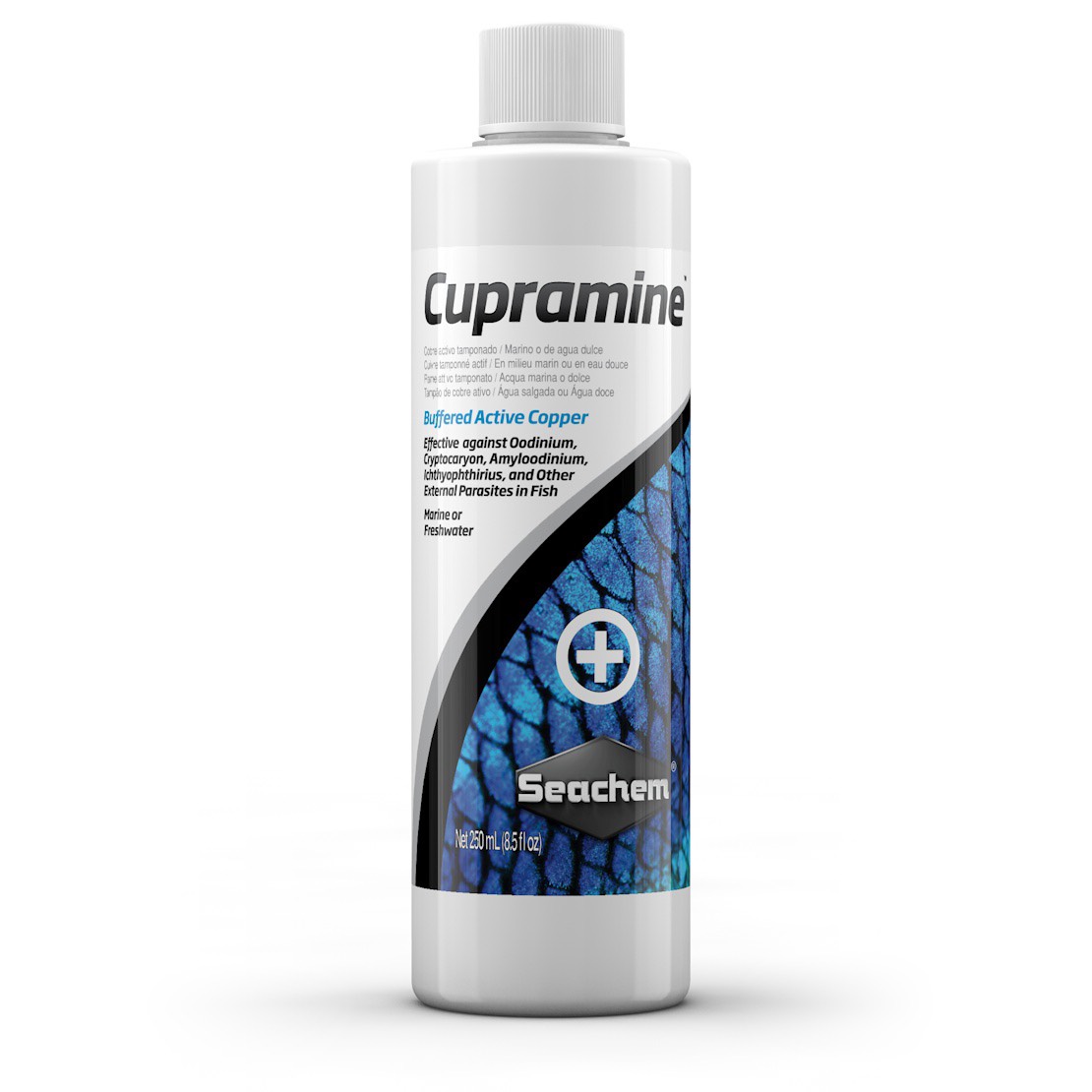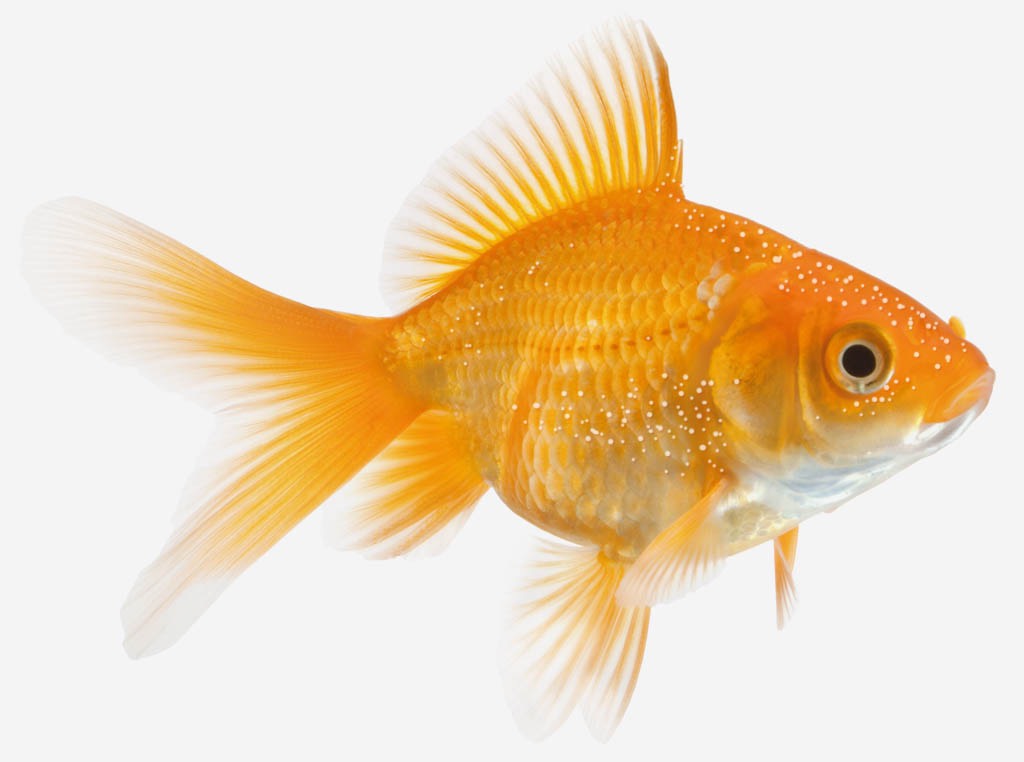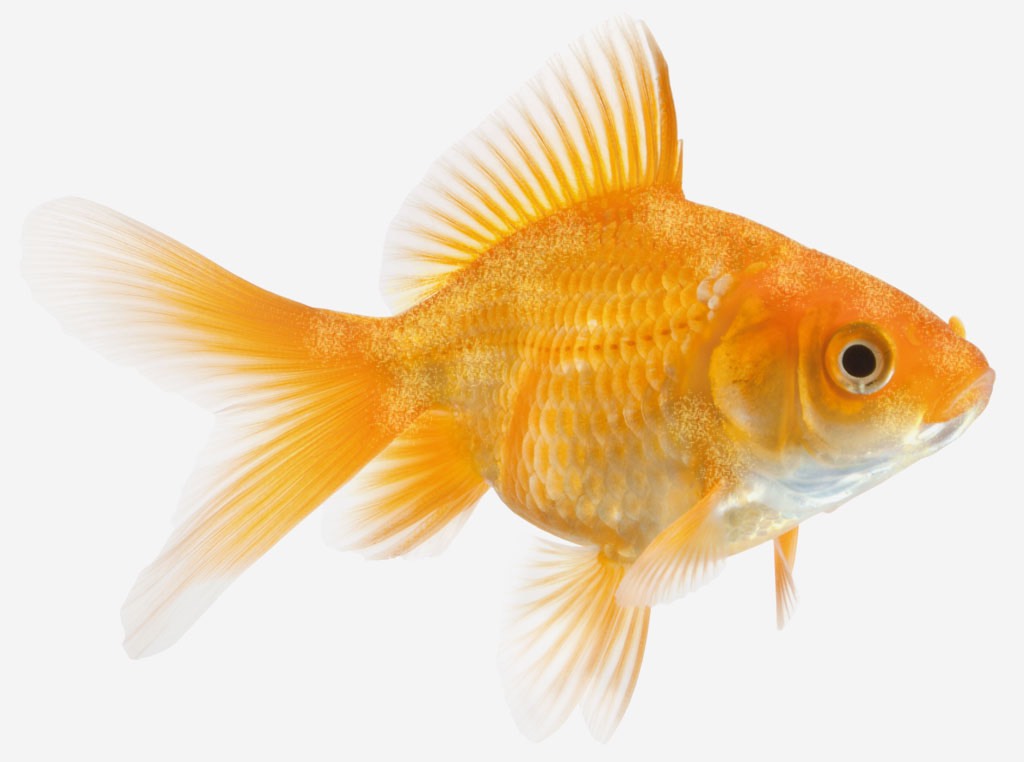Medications
Cupramine™ effectively eradicates Oodinium, Cryptocaryon, Amyloodinium, Ichthyophthirius, and other ectoparasites of both freshwater and marine fish. It is superior to copper sulfate, chloride & citrate: it is non-acidic, less toxic to fish, remains in solution, and does not contaminate the filter bed. It is superior to chelates: it is fully charged (ionic), active at low concentrations, and is removable with carbon.
There is more than a four-fold concentration gap between the minimal therapeutic dose (0.2 mg/L) and the toxic dose (0.8 mg/L). Cupramine™ is easily removable with chemical filtration. It is highly effective and safe in freshwater as well as marine water.
Cupramine™ is appropriate for treating a variety of ectoparasites of both freshwater and marine fish. Below are some of the more common infections treatable with Cupramine™. Be aware that many diseases and infections share similar physical and behavioral symptoms, e.g. clamped fins, lesions, loss of appetite.
Before Treating
Remove all invertebrates - these are extremely sensitive to copper and will not tolerate treatment with a copper-based medication. Turn off UV filters, ozone filters, and remove chemical filtration like MatrixCarbon™ and Purigen®. Do not use in conjunction with any other medication. Do not use any products which contain reducing agents (conditioners, ammonia binders, etc.) while using Cupramine.
Treatment
If the bottle has a dropper cap, use 20 drops (1 mL) per 40 L (10.5 US gallons) the first day, wait 48 hours, then repeat. On non-dropper caps, each inner ring is 1 mL. In freshwater use half dose. Final copper concentration is 0.5 mg/L (0.25 mg/L in freshwater). Leave at this concentration for 14 days. Do not redose without testing (MultiTest™ Copper). If tank has ever been treated with an ionic copper (e.g. copper chloride, sulfate or citrate), test copper level after initial dosing. Although most fish tolerate Cupramine™ to 0.8 mg/L, it is not advisable to exceed 0.6 mg/L copper.
Finish the Full Treatment
Ich, velvet, and many other parasites spend a large portion of their life cycle as a cyst that is immune to medication and hiding in the substrate of your tank. Remember that you need to finish the full treatment even if you can’t see parasites on the fish!
After Treating
Cupramine™ can be removed using carbon or CupriSorb™. Leave the copper-absorbing media in your tank for at least a week after the copper concentration has reached 0 to ensure all traces of the medication have been completely removed.
A: Unlike ionic copper or copper citrates, Cupramine™ will not precipitate out. Once a level is attained it will remain there until removed by carbon, CupriSorb™, or other material. You may see a lower than expected level if you have crushed coral substrate or live rock. It is recommended that you quarantine fish in hospital tanks before entering them into your display system and when treating with any medication. As with any copper medication, it is not safe for use in a reef tank.
A: If Product X is a reducing agent such as ParaGuard™ (or other aldehyde based medications), or if you overdose with a dechlorinator, such as Prime® then the Cu2+ will be reduced to Cu+. Cu+ is 10 times more toxic than 2+.
A: The ionic copper has been adsorbed onto your filter bed and is now being extracted and solubilized by the amine complex in Cupramine™. You can either adjust your Cupramine™ dose accordingly, use our CupriSorb™ to slowly extract the copper from the filter bed (although this could take weeks depending on how much copper is adsorbed), or replace the filter bed.
A: Ammonia test kits can not distinguish ammonia from the amine based complex present in Cupramine™ and will therefore give a false high reading for ammonia while using Cupramine™. Our Ammonia Alert® and MultiTest™ Free & Total Ammonia test kit do not suffer from this problem as they utilize a gas exchange technology that can distinguish ammonia from amines.
A: Yes, Cupramine™ effectively eradicates ectoparasite of both freshwater and marine fish. Please be sure to follow all directions on the product, make sure that you do not mix with any other medications and turn off your UV sterilizer.
A: Cupramine™ will not affect the previously mentioned tests as this product is buffered and will not negatively influence pH or alkalinity.
A: Cupramine, like the rest of our line, is designed to have an indefinite shelf life (relatively speaking). The only way this product may not function properly is if something was purposely added to the bottle to contaminate the product or precipitate the ingredients out of solution.
A: Our Cupramine™ is the only copper based remedy of it's kind on the market as this technology is very unique to our company. This copper based remedy is complexed to an organic (amine), hence the name Cupramine™. This complex is very stable in water, meaning it is the least likely of all the copper remedies to "stick" to a gravel bed or live rock. I am not aware of any copper that sticks to silicon seals. It is also very easy to remove with carbon as this copper remedy is complexed to an organic and carbon readily removes organic material. We also manufacture Cuprisorb™ for copper removal. This product is very aggressive at removing copper based remedies (as well as other heavy metals). This resin will change colors as it removes copper and is regenerable. Continue to regenerate and use this product until you do not see the resin change color for a week. By then, most/all of the copper should be removed from your system. You can make sure of this by testing with our MultiTest™ Copper test kit.
Considering that you have already added Cupramine™ to your reef aquarium, I would definitely follow the instructions (2 doses 2 days apart). The instructions are based on gallons (1 ml per 10.5 gallons). Be sure to estimate the correct amount of gallons in your aquarium for proper dosing. If your aquarium is a typical reef with a lot of rock, you have displaced some of the gallons of your aquarium. Given that you have dosed your aquarium once with Cupramine, I would test the level of copper to figure out what level you currently have. Ex., If you have dosed 3 ml and come out with .25 ppm of copper, you know dosing another 3 ml will raise the level another .25 ppm for a total of .50 ppm, which is the recommended concentration for this product. Keep in mind that this product is still effective as low as .20 ppm and generally safe for fish up to .80 ppm, but we recommend .50 ppm as the ideal level.
You can also use GarlicGuard™ in the food to help enhance the immune system of the fish. If the fish have trouble eating, this product will also act as an appetite stimulant. GarlicGuard can be used in conjunction with Cupramine.
A: YES! Do not use Formalin with Cupramine™ or any other copper medication. It will reduce the Copper +2 to Copper +1 which is highly toxic at even small doses.
A: You will need to prepare the water 48 hours in advance of doing the water change. Add the Prime® to your buckets of replacement water 2 days prior to doing your water change. The water will immediately be dechlorinated, and 48 hours later the Prime® will no longer be active and you can perform your water change safely. Remember, that you will also have to add Cupramine™ back to the replacement water to bring it up to the final concentration of the tank. This should be done just before doing the water change.
Can't find what you're looking for? Ask us a new question. One of the experts from our technical support staff will be happy to promptly respond. You can also call 888‑732‑0003 (Monday- Friday 9:00 AM - 5:00 PM EST) if you would like to speak directly with a technical support representative.
Download Safety Data Sheet (SDS)
In case of eye exposure, promptly & thoroughly wash eyes with water & seek medical attention. Aquarium Use Only. Keep Away from Children. For ornamental fish only. Not for human consumption. Not to be used in conjunction with animals used for human consumption.



